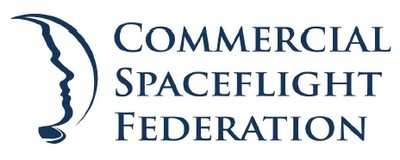Wed, Feb 04, 2015
Says President’s Spending Plan For Next Year Builds On Success Of Commercial Partnerships
The Commercial Spaceflight Federation said in a statement that it applauds the proposals within NASA’s FY 2016 budget request that will enable NASA’s public-private partnerships to advance U.S. exploration in low-Earth orbit and beyond. The budget provides $1.24 billion for the Commercial Crew Program, $231 million for Advanced Exploration Systems (AES), and $15 million for Space Technology’s Flight Opportunities Program.

“Many of the proposals in this budget request continue the good work enacted into law by Congress last year,” stated CSF President Eric Stallmer. “We applaud the strong support for Commercial Crew and Cargo, Advanced Exploration Systems, and Space Technology’s Flight Opportunities Program, all of which contribute to safe, reliable, and cost-effective capabilities for our nation’s space program. We look forward to working with Congress to fully fund and authorize these innovative commercial approaches to achieve our national space priorities.”
NASA’s Commercial Crew and Cargo Programs leverage competitive, firm-fixed price contracts to provide the U.S. with multiple transportation capabilities to and from the International Space Station; thereby ending NASA’s dependence on Russia by 2017. NASA currently pays Russia more than $70 million per seat to fly our Astronauts from Russia to the International Space Station. With two domestic providers under contract, the Commercial Crew Program will allow American Astronauts to fly from American soil and lower the average cost per seat to $58 million.
AES initiatives enable NASA to leverage industry’s investments in the development of exploration capabilities such as expandable habitat modules and lunar landers. These public-private partnerships will play a critical role in extending sustained human presence in and beyond low-Earth orbit.
The Flight Opportunities Program works with commercial companies to pursue cost-effective technology demonstration and science research opportunities on suborbital vehicles. The knowledge gained from these affordable flights will enable future manned and unmanned missions to new destinations, keeping the U.S. at the forefront of exploration technology.
More News
We're Everywhere... Thanks To You! Even with the vast resources and incredibly far-reaching scope of the Aero-News Network, every now and then a story that should be reported on sl>[...]
“The Coast Guard anticipates new aircraft procurements may be based off Sikorsky’s MH-60R aircraft, which is the maritime variant of the H-60 in active production. Diff>[...]
Aero Linx: Classic Jet Aircraft Association (CJAA) The CJAA Formation and Safety Team (FAST) Mission is to be the sole authorized provider of formation training and certification f>[...]
During A Low Pass Over A Gravel Bar, The Airplane’S Tailwheel Impacted An Area Of Rough, Uneven Terrain Analysis: The pilot reported that he was flying low-level over various>[...]
Hold For Release Used by ATC to delay an aircraft for traffic management reasons; i.e., weather, traffic volume, etc. Hold for release instructions (including departure delay infor>[...]
 ANN FAQ: How Do I Become A News Spy?
ANN FAQ: How Do I Become A News Spy? Aero-News: Quote of the Day (10.28.25)
Aero-News: Quote of the Day (10.28.25) ANN's Daily Aero-Linx (10.28.25)
ANN's Daily Aero-Linx (10.28.25) NTSB Final Report: Aviat Aircraft Inc A-1B
NTSB Final Report: Aviat Aircraft Inc A-1B ANN's Daily Aero-Term (10.28.25): Hold For Release
ANN's Daily Aero-Term (10.28.25): Hold For Release



